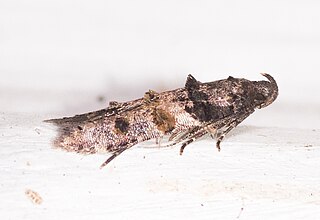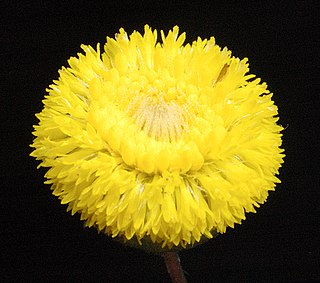
Lepidoptera or lepidopterans is an order of winged insects that includes butterflies and moths. About 180,000 species of the Lepidoptera have been described, representing 10% of the total described species of living organisms, making it the second largest insect order with 126 families and 46 superfamilies. and one of the most widespread and widely recognizable insect orders in the world.

Moths are a group of insects that includes all members of the order Lepidoptera that are not butterflies. They were previously classified as suborder Heterocera, but the group is paraphyletic with respect to butterflies and neither subordinate taxa are used in modern classifications. Moths make up the vast majority of the order. There are thought to be approximately 160,000 species of moth, many of which have yet to be described. Most species of moth are nocturnal, although there are also crepuscular and diurnal species.

The de Havilland DH.82 Tiger Moth is a 1930s British biplane designed by Geoffrey de Havilland and built by the de Havilland Aircraft Company. It was operated by the Royal Air Force (RAF) and other operators as a primary trainer aircraft. In addition to the type's principal use for ab initio training, the Second World War had RAF Tiger Moths operating in other capacities, including maritime surveillance and defensive anti-invasion preparations; some aircraft were even outfitted to function as armed light bombers.

Walshia is a genus of moths in the family Cosmopterigidae.

The Erebidae are a family of moths in the superfamily Noctuoidea. The family is among the largest families of moths by species count and contains a wide variety of well-known macromoth groups. The family includes the underwings (Catocala); litter moths (Herminiinae); tiger, lichen, and wasp moths (Arctiinae); tussock moths (Lymantriinae), including the arctic woolly bear moth ; piercing moths ; micronoctuoid moths (Micronoctuini); snout moths (Hypeninae); and zales, though many of these common names can also refer to moths outside the Erebidae. Some of the erebid moths are called owlets.
The Chrysopeleiinae are a subfamily of the Cosmopterigidae, although some authors treat it as a full family, the Chrysopeleiidae.
Walshia albicornella is a moth in the family Cosmopterigidae. It was described by August Busck in 1914. It is found in Panama.
Walshia calcarata is a moth in the family Cosmopterigidae. It was described by Lord Walsingham in 1909. It is found in Mexico.
Walshia detracta is a moth in the family Cosmopterigidae. It was described by Lord Walsingham in 1909. It is found in Mexico.
Walshia dispar is a moth in the family Cosmopterigidae. It was described by Ronald W. Hodges in 1961. It is found in North America, where it has been recorded from Ontario to Virginia.
Walshia elegans is a moth in the family Cosmopterigidae. It was described by Ronald W. Hodges in 1978. It is found in North America, where it has been recorded from Florida, Louisiana, Arkansas, Iowa and West Virginia.
Walshia exemplata is a moth in the family Cosmopterigidae. It was described by Ronald W. Hodges in 1961. It is found in North America, where it has been recorded from Maryland, Arkansas, Indiana, Ohio, West Virginia, South Carolina, Mississippi, Louisiana and Florida.

Walshia miscecolorella, the sweetclover root borer moth, is a moth in the family Cosmopterigidae. It was described by Vactor Tousey Chambers in 1875. It is found in North America, where it has been recorded from southern Canada south to Florida and Texas.
Walshia particornella is a moth in the family Cosmopterigidae. It was described by August Busck in 1919. It is found in North America, where it has been recorded from Maryland, Illinois, Arkansas, Kentucky, Mississippi, Texas and Florida.
Walshia pentapyrga is a moth in the family Cosmopterigidae. It was described by Edward Meyrick in 1922. It is found in Brazil.
Walshia similis is a moth in the family Cosmopterigidae. It was described by Ronald W. Hodges in 1961. It is found in North America, where it has been recorded from Massachusetts, Michigan and from Illinois to South Carolina and Florida.
Walshia floridensis is a moth in the family Cosmopterigidae. It was described by Ronald W. Hodges in 1978. It is found in North America, where it has been recorded from Florida.

Podolepis lessonii is an erect annual herb native to Western Australia, belonging to the Asteraceae family.






